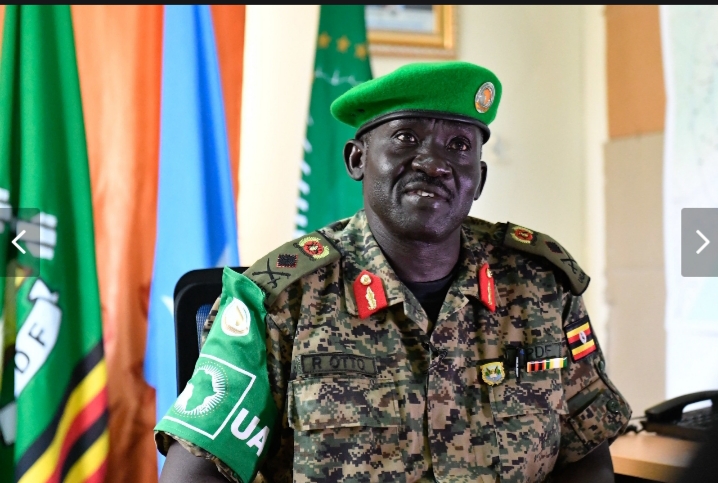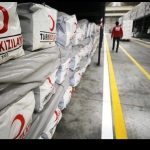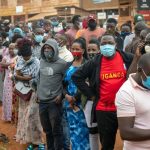Mogadishu(SONNA):The African Union Mission in Somalia (AMISOM) says its troops have remained steadfast and continue to implement the mission’s mandate despite reducing troop numbers early this year and the disruptions brought by the COVID-19 pandemic.
Early this year, AMISOM had to reduce troop numbers by 1000, spread across all the five Troop Contributing Countries, but Brig. Gen. Richard Otto, the Contingent Commander of Sector 1 troops, said this had not affected operations in his area of responsibility. Since December 2017, AMISOM has been reducing its troop numbers in line with relevant UN Security Council decisions. Ugandan troops are in charge of Sector 1, which includes Lower Shabelle region and Mogadishu.
Additionally, due to the global corona virus pandemic, Sector 1 has had to put on hold the rotation of its troops both in and out of the mission but Gen. Otto noted that this has not affected operations or dampened the morale of the troops.
“I have troops who were supposed to rotate out but have not because of this situation. Most of the countries have restricted their airspaces and border posts, but this is aimed at protecting and controlling the spread of the disease from other countries. My troops have been informed and they are aware. It has not affected their morale,” Gen. Otto explained.
Gen. Otto said his troops are maintaining all their locations, continuing with offensive missions against Al-Shabaab and are protecting population centers and main supply routes.
“All the main supply routes under my sector are operational. Vehicles continue to move, even civilian vehicles continue to move from Lower Shabelle into Mogadishu and from Mogadishu back to those towns, including Janaale, Marka, up to Baraawe,” General Otto said.
Speaking at the AMISOM Sector One Headquarters in Mogadishu, Gen. Otto said counter offensive operations that resulted in the capture of major bridge towns, especially of Janaale, in the Lower Shabelle region of Somalia early this year had dealt a huge blow to Al Shabaab, denying the militants freedom of movement and operation, and seriously curtailing their ability to wage war.
“When we captured Janaale, we found a big local factory for manufacturing Improvised Explosive Devices (IEDs). Since Janaale was captured by AMISOM, the situation has changed completely because Al-Shabaab is no longer free to cross River Shabelle from the northern part and come to the southern part because that was the only bridge town remaining on the River Shabelle under the militants,” Gen. Otto explained.
Uganda AMISOM Forces, together with the Somali National Army (SNA) last year launched operation Badbaado, capturing four key bridge towns-Sabiid-Anole, Bariire, Ceel Saliini and Awdegle, and culminating in the capture of Janaale in March 2020.
Following a string of defeats, Gen. Otto said that Al-Shabaab has now resorted to using IEDs and shelling mortars, which have often landed in population centers and caused harm to innocent civilians.
“Al-Shabaab have lost ground; they don’t have a particular area where you will go and find Al-Shabaab only. They always hide within the population. They use mortars to shell the population,” the General said.
Gen. Otto said that a key factor in the fight against Al Shabaab has been the increasing capabilities of the Somali National Army, as seen by the SNA’s capacity to fight and hold ground.
The increasing role of SNA is in line with the revised AMISOM Concept of Operations (CONOPS 2018-2021) and is also guided by the Somalia Transition Plan (STP). The Somalia Transition Plan is a comprehensive guide developed by the Federal Government of Somalia and its partners for the transfer of security responsibility to Somali National Security Forces ahead of AMISOM’s anticipated exit from the country.
“So with SNA, we are happy that they are now strong enough, especially in holding some of the liberated areas, like the towns which were captured last year. They are now under the Somali National Army,” the General said.





